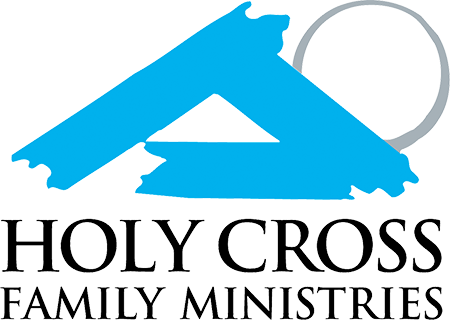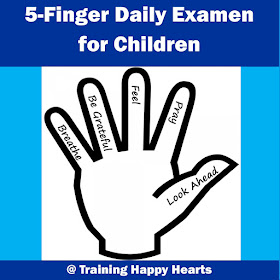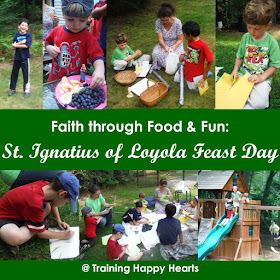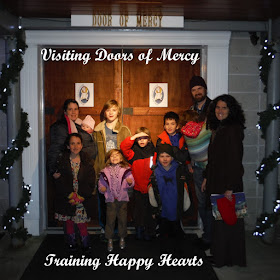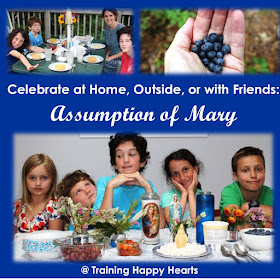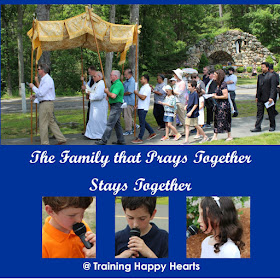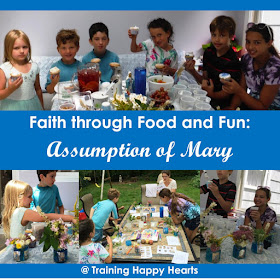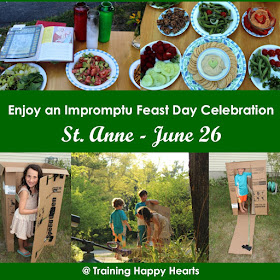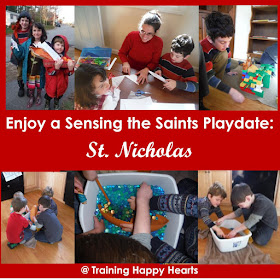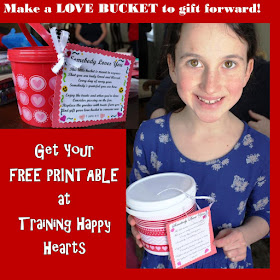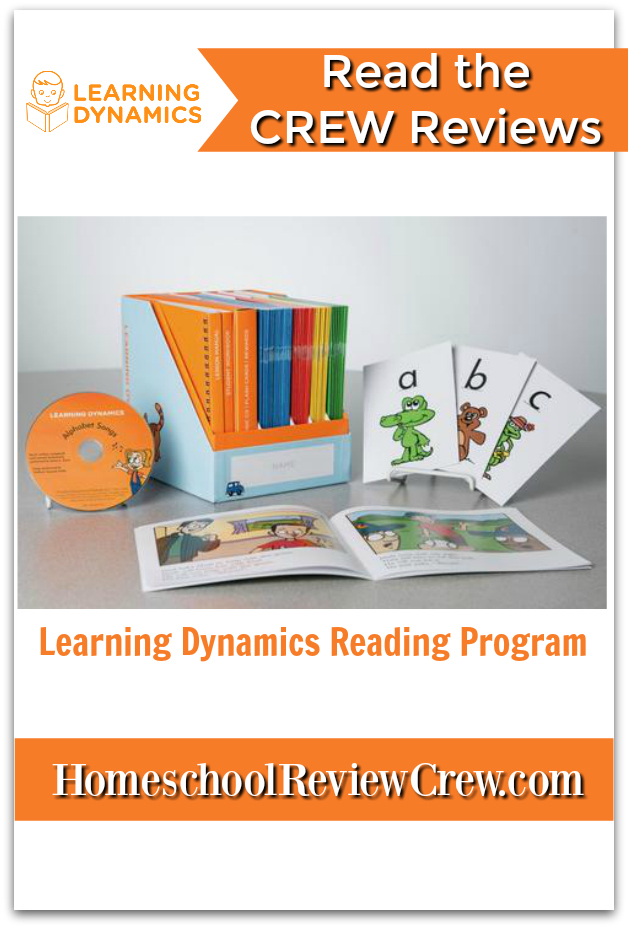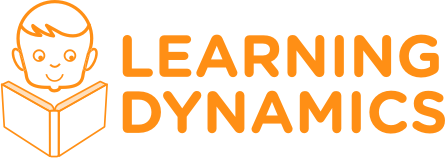Recently, I was asked about how to build Catholic community with children.
As I thought about all the successful ways that my family has worked at building kid-inclusive Catholic community among our homeschool network and in our local church collaborative, I realized three truths.
~1~
No Catholic community thrives - or even survives - without the Eucharist at its center and regular participation in the Sacraments among community members.
Years ago, when my own parish was undergoing some changes, I asked multiple families at a nearby parish what they thought was working to make their community such a close-knit, faith-filled one.
I expected to hear about children's programming, coffee hours, faith formation classes, Bible studies, church outings, and more. Instead, every single family I asked said the same thing: the Eucharist!
As I understand, a priest who had a great love for the Eucharist had transferred to their parish and had become a driving force for Perpetual Adoration. He also added more times when people could receive the Sacrament of Reconciliation. After that, things just began to bloom at the parish and the warm and friendly "external" initiatives that I had been witness to grew.
The "internal" seed of love for Jesus in the Eucharist and a focus on the sacraments makes a huge difference for church communities. It also makes an enormous one for families.
So, if you seek to build a strong Catholic community for your children, do partake in the Sacraments and get close to Jesus in the Eucharist as often as you can. Make participation in Mass, Reconciliation, Adoration, and more a regular thing. This will increase grace and strengthen you. It will also, typically, help you become familiar with other Catholics in your area and plant the seeds that can grow into a supportive, vibrant community.
If your parish does not offer regular Sacraments or opportunities to participate in Holy Hours, Children's Adoration, or family Adoration, talk to your priest about initiating such things or find another parish close to you to be your Catholic home-not-far-from-home for these things.
Likewise, do not be afraid to branch out from your local parish to attend events, Masses, Adoration, Reconciliation, relic tours, and more at nearby parishes when opportunities arise. Doing so can keep you and yours focused on Christ while also widening your Catholic community. Plus, as you live wonderful faith-filled experiences, you can share them with friends - new and old - as mini religious pilgrimages.
Similarly when you're traveling, continue to make God a priority, never missing a Mass, but going to MassTimes.org to find a parish close to where you are. You might even consider making a holy pilgrimage as part of your vacation by visiting the shrines and other holy places or checking out The Real Presence to find a place to pop in to see Jesus.
As you and your children focus on Christ and participate in Masses, the Sacraments, and faith events close to home and further afield, your will gain grace and experience truth and beauty. You may also meet some wonderful people while your children come to understand that Catholic community does not stop at the doors of our own churches. We are truly part of one, holy, catholic, and apostolic church. Our community extends to every part of the world, praise God!
~2~
Prayers have power - especially when shared.
As the Venerable Patrick Peyton said, "The family that prays together, stays together." This is certainly true, and I would venture to say that the community that prays together also stays together. So, when building Catholic community with kids, do focus on prayer.
Begin praying in your own domestic church daily:
- Set prayer pegs.
- Read from Scripture.
- Make time to pray the Rosary with each member of the family offering an intercession with each decade or even with each Hail Mary in a single decade if that;s all you can manage.
- Pray at meal times.
- Offer morning prayers and bedtime ones.
- Allow your children to witness you in private prayer, and encourage them to pray daily on their own, listening for God’s call and responding to it when they hear it.
- Of course, pray for the Lord to put into your path a strong community of faith-filled friends and acquaintances.
Find times for you and your family to pray structured, formal prayers and unstructured, free-flowing ones, and you will find your family strengthened.
Then, let the strength flow out to the community.
Invite others to pray with you, go to prayer events, partake in the Children's Rosary. Build traditions based on the seasons celebrated in the liturgical calendar and invite others to pray, feast, and play with you during these annual celebrations.
Understand that there will be times that others do not accept your invitations, but there will also be times when many may. Whatever the case, embrace the relationships that begin to bloom as God answers your prayers for community. If your experience becomes anything like my family's, you will find yourselves in a garden of blessed relationships!
~3~
Relationships take time and bloom beautifully when we remember PEPS.
Just as we don't come to know and love Christ all at once, but rather keep developing a relationship with Him throughout our lives, we do not go from meeting fellow Catholics with kids to making lasting bonds with them in mere seconds.
Relationships need time and space to grow.
Thus, I am a big advocate of intentionally making time to share with other Catholic families - both at faith-centered events and just in everyday ways - so that relationships can germinate, grow, and bloom.
In doing so, I like to follow a model I call PEPS: Pray, Eat, Play, and Serve. With these four ideas as cornerstones, I have found community grows.
Pray
As I have already mentioned, centering ourselves in the Eucharist and praying are vital to building Catholic community.
Of course, Mass is the ultimate prayer to share together, so, whenever possible, it is fruitful to share Mass experiences together.
Other communal prayer options can sometimes seem awkward at first, but little unites people in the end like prayer can. For prayer is such an intimate act that, when shared, it draws people close to each other over time and also becomes a natural part of being together as Catholics.
Just the other day, when a Catholic friend of my son's was at my home for a sleepover, I had a message from a friend about a sudden and serious health concern. Immediately I called my children to pause everything and, together, my children and our sleepover guest paused and prayed a decade of the Rosary together for our friend's special intention. It was natural, beautiful, and unitive.
Similarly, mealtime grace, prayers for the dead, emergency vehicle prayers, prayers for special intentions, and more have each been shared by my children and their friends as we go about our daily activities.
Likewise, adults and children in our Catholic community are always just a word, phone call, or private message away from sharing prayer intentions and making offerings for one another. This network of praying friends is such a beautiful and powerful thing for which I am grateful!
Jesus broke bread with others and so should we.
Of course, just as families should enjoy regular meals together, making at least one mealtime a day a family priority for togetherness, inviting communities to get together for meals in small groups or as a parish is something to prioritize as well.
There is just something about eating together that bonds people. Plus faith through food is fun, especially for kids!
Start meals with a prayer, enjoy conversation, linger, and love one another.
Pair eats with a book club meeting, Bible study, faith video series viewing, movie night, outing, or anything else, and it becomes an event.
Without doubt hospitality is a pleasurable and important part of Christian life and a prime way to build community.
Potlucks, picnics, teas, sit down meals... Any time we share meals with others, we build community.
Eating together with those we wish to grow in faith alongside can become such a welcome part of community life.
Most certainly kids love to play, and play is good for adults, too. So, when building Catholic community, remember to include the levity of play.
We've always found that pairing formal prayer times with hands-on activities or good old-fashioned play helps children who have the wiggles and also brings about giggles.
We've also found that occasionally layering liturgical year celebrations into regular playdates works beautifully as does centering playdates specifically around saint days.
Similarly, we've come to recognize that just getting together with friends who are strong in faith to hike, swim, boat, play board games, ... whatever is a blessing. Not everything has to be planned out, directly related to faith, or paired with something more somber. Simply enjoying relaxed fun time together is essential to building Catholic community with kids!
Serve
Jesus is a servant-king that asks us to serve one another, too.
Getting together with others to serve is an excellent way to connect and opportunities abound.
You can cook together for a meal train for new moms, sick friends, etc.
You can join community events to pack meal boxes for the hungry before holidays.
You can participate in gift drives and wrapping.
You can create events where kids get hands-on making things for pro-life causes, homeless people, neighbors, and more.
You can simply focus on Works of Mercy together.
There are many ways children can enjoy living a life of service, and, undoubtedly, as children do good together, they form even closer bonds.
Relationship with God and with others go hand-in-hand.
As you keep Christ at the center of your life, focus on the Eucharist and Sacraments, pray, and remember PEPS, no doubt you will begin to find that an enriching, supportive community of friends develops which will help you and your children stay connected spiritually and socially.
I believe God places a natural desire within each of us for fellowship and, if we listen to that desire and prioritize participation in experiences that match our needs and schedules, we will discover deepening relationships with Christ and others - and ensure our children do as well.
I would love to hear about your successes and challenges in building Catholic community with kids and plan to share more about this topic in the future, so stay tuned and enjoy every blessing of community that comes your way!

